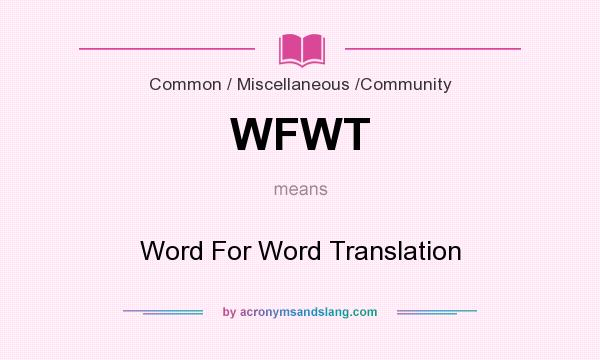


Because these Bibles’ language and phrasing can differ from modern English, you’ll benefit from keeping a commentary or study Bible handy while reading, to help you sort out unusual or confusing terms and phrases. They work especially well when paired with a Bible commentary or other study tool.

If this style of language appeals to you, you’ll want to be sure to listen to them as well as read them-so visit our library of audio Bibles to get the full effect.Ĥ. You might use words like majestic, soaring, or inspiring to describe them-perhaps even “old-fashioned,” but in a positive sense. Because they’re translating a vocabulary and sentence structure that are quite far removed from modern spoken language, word-for-word Bibles have a unique voice that truly stands out from modern writing and literature. And it’s not possible to completely remove fallible human interpretation from the mix-even the decision to translate a Bible word-to-word is an interpretive act! Nonetheless, a word-for-word translation tries to keep translation compromises to a minimum.ģ. While translators may try to be as “literal” as possible, they must inevitably make many interpretive decisions, sometimes choosing the best of several unsatisfactory options. Because no two languages are exact 1:1 matches to each other, it’s not possible to create a 100% word-for-word translation (certainly not one that is comprehensible). “Word-for-word” is a goal to be aimed at, not completely achieved. By sticking as closely as possible to the original words and structure, these translations reduce the number of major interpretative decisions that a translator has to make-and thus, reduce the chance that fallible translators will make the wrong translation choice and distort the meaning of the original.Ģ. They aim to reduce the “human interpretation” factor in Bible translation. What’s Important to Know About Word-for-word Bible Translations?ġ.

People sometimes call this kind of Bible a “literal” translation. (The more technical term for “word-to-word” is formal equivalence.) Whenever possible, a word-for-word translation tries to translate each word, phrase, and concept in the original text with an exactly matching word, phrase, and concept in the target language. Recently, we offered a few thoughts in response to the common question “Which Bible translation is the best?” Today, we’ll continue the discussion with a look at one type of Bible translation that you can find here at Bible Gateway: word-for-word Bible translations.Ī word-to-word Bible translation is a Bible that aims to hew as closely as possible to the wording and grammatical structure of the original text.


 0 kommentar(er)
0 kommentar(er)
